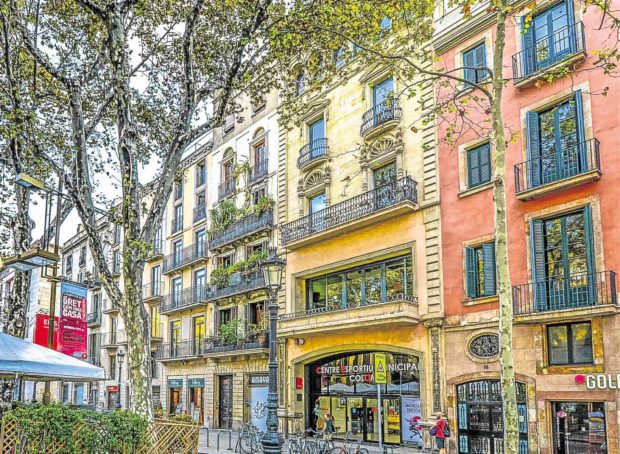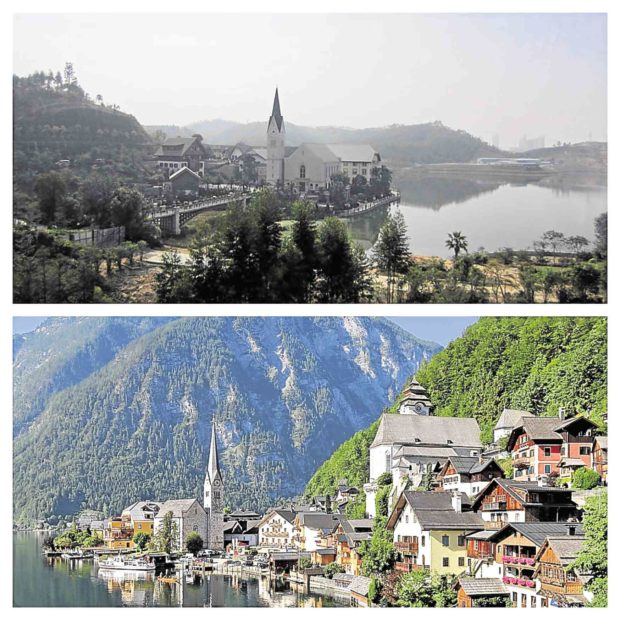Great replications
Have you ever dreamed of living on the mountains of Sicily? Or cruising through the streets of Beverly Hills? While only a lucky few get to live in these actual sites in this lifetime, you can experience a similar setup by living in a themed neighborhood.
Many real estate developers turn to existing tourist spots for inspiration when creating new projects. Some, however, take it a step further by actually replicating the sites in their local vicinities. While there are many that look like cheap knock-offs, you’ll be surprised that several actually succeed in creating attractive and sustainable environments. The following neighborhoods show that some imitations can compete with originals when it comes to suburban living.
Coral Gables Villages (Florida, US)
The Coral Gables in Florida is one of those that pioneered the art of imitation in the suburbs.
Built in 1920’s America, the area features six themed residential areas: The Dutch South African Village, the Chinese Village, the French Normandy Village, the Colonial Village, the French Country Village, the French City Village and the Italian Village. These areas belong to the same city but look as if they were built on different parts of the word. What makes these villages successful in their replication is that their builders had firsthand or well-researched knowledge of their reference designs.
The village was developed by George Merrick and the American Building Corp. The houses in the area were developed by various architects such Mott B. Schmidt and Henry Killam Murphy. The latter, in particular, was a scholar of Oriental architecture who designed the Chinese Village. His houses featured soaring, pointed roofs and intricate gates.
Article continues after this advertisement
The Chinese Village of Coral Gables was designed by Henry Killam Murphy, a scholar of Oriental architecture.
The dwellings were arranged in a cluster and connected by a common wall, forming a compound.
Article continues after this advertisementAnother notable design in the community is the Dutch South African Village. Designed by Marion Sims Wyeth, the houses were inspired by the farmhouses of the Dutch colonists of South Africa in the 17th century.
The village manages to reflect Dutch colonial architecture elements, with its gambrel roofs and elaborate parapet designs, while still instilling tropical elements especially in its landscaping.
Today, the homes of Coral Gables still stand in their original magnificence, nearly a hundred years old. They are considered part of Florida’s heritage, protected by cultural and arts development boards. In the words of Ellen Uguccioni, former director of the community’s Historic Preservation Department, “There is this visionary aspect of using the best architects who knew the design details to design those houses.” Coral Gables is an example of a replica community which have earned their own recognition for their consistent and loyal homage to the originals.
International City (Dubai)
The International City of Dubai is a more modern take of thematic architecture. It sits on a widespread area of 800 hectares, with areas allotted for residential, commercial and industrial use. Overall, it is made up of 485 structures that were inspired by houses from Persia, Greece, Spain, Morocco, England, France, Italy, Russia, China and Emirates. Implementation of additional areas taking after the Forbidden City and the Lake District were shelved due to the global recession of the early 2000’s.
Hallstatt Replica (Guangdong, China)
Imagine waking up one day and learning that your whole town has been duplicated halfway across the world. Well, that is what happened with Alexander Scheutz, mayor of the small town of Hallstatt in Austria, in 2011. He learned that his hometown was secretly studied by a Chinese design group and built in Luoyang of Guangdong Province, China.
The original Hallstatt village of Austria is a Unesco heritage site which attracts about a million tourists per year. As many Chinese residents are not able to visit the heritage site personally, many are content on visiting European-inspired buildings in their area. Because of this reason, China’s Hallstatt has become a popular tourist attraction among locals. The site has seen many visitors, ranging from families out for an afternoon stroll to couples having their pre-nuptial photos taken.
Mayor Scheutz and his neighbors were able to accept their town’s replica good-naturedly and even graced the opening ceremony of the neighborhood. While the Chinese neighborhood has yet to reach the international recognition of its predecessor, it serves as an alternative tourist destination for those who wish to get a feel of Europe in the Orient.
Knock-off or knock your socks off?
While the idea of replicating architecture is a controversial topic, one cannot help but admire the lengths developers go through to design themed communities for their intended residents. More often than not, the effort that goes into duplicating the details of architectural elements and landscaping yield fantastic results.
If you’re thinking of buying a property in one, just remember to check out if the house or building remains suited to the local context. While it is easy to claim an Italian or American-inspired home, it does not always follow that the house will be comfortable to live in. Site and climate conditions should have also been studied and considered to provide optimum living for the residents. In this way, themed communities become more than amusement parks and actually become our ideal homes.
Sources:
coralgables.com
revolvy.com
nakheel.com
khaleejtimes.com
businessinsider.com
Bwag, Hanno Böck via Wikimedia Commons
Ouss Ama via pxhere.com
Pixabay.com


